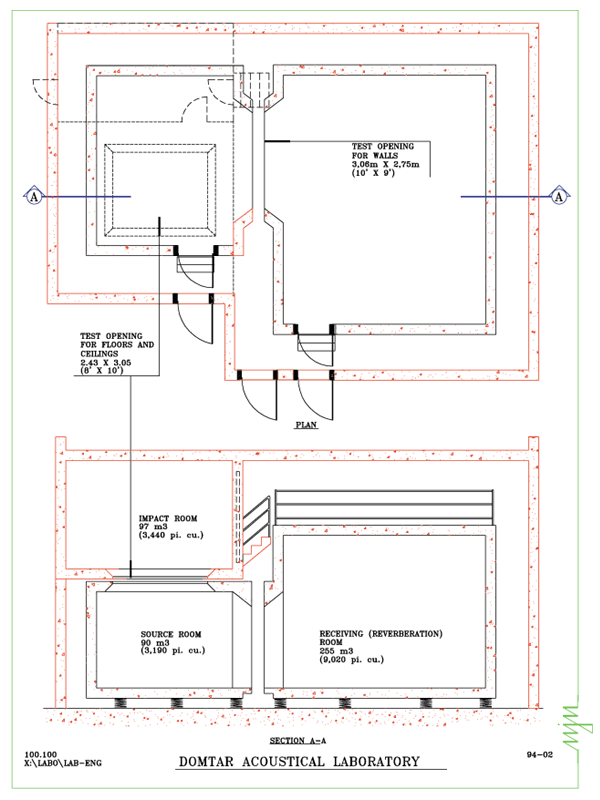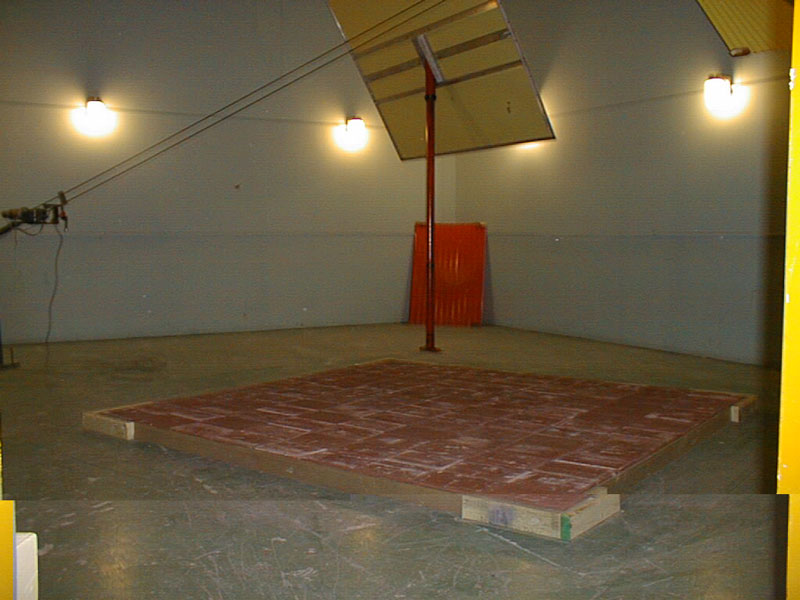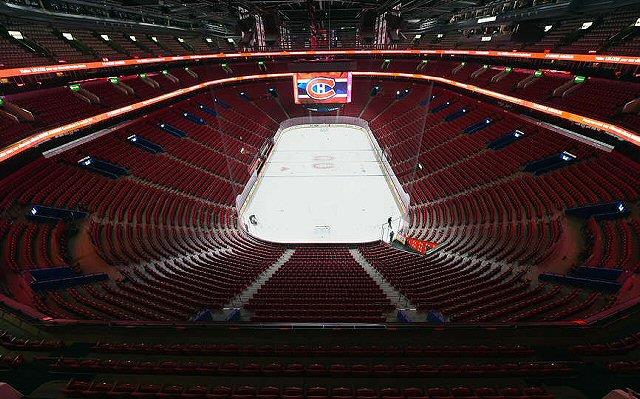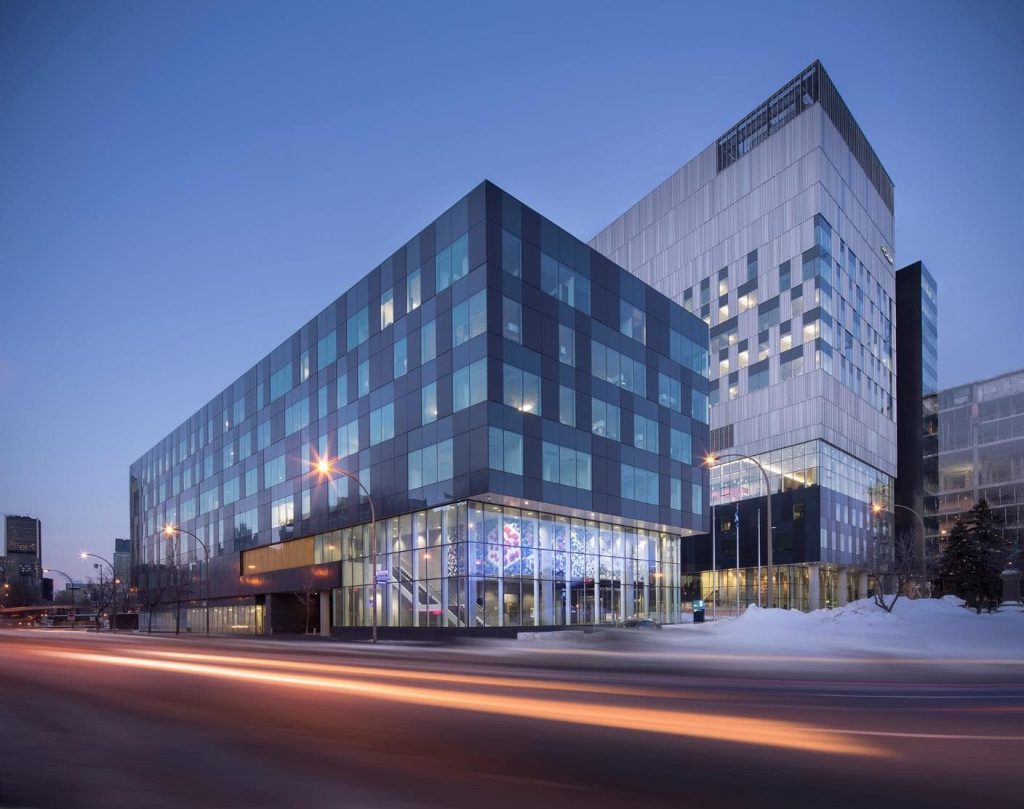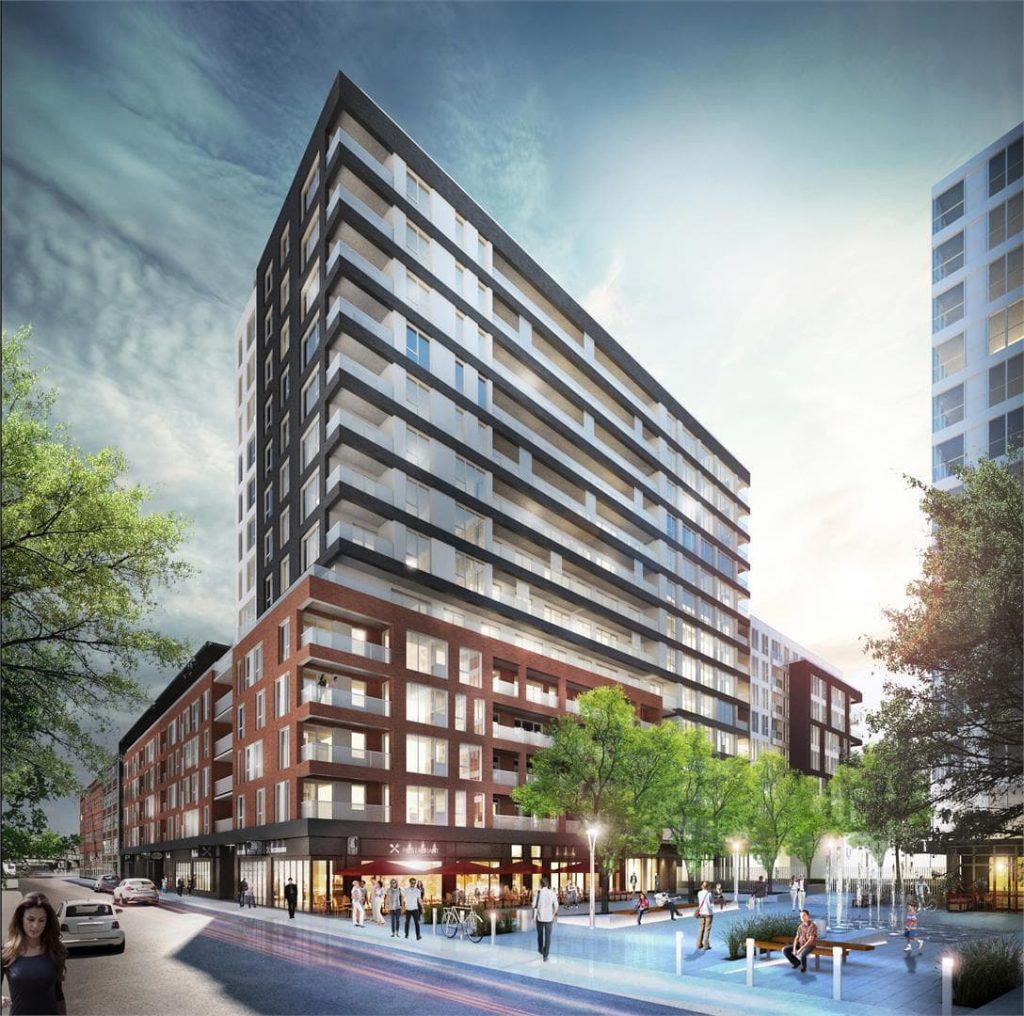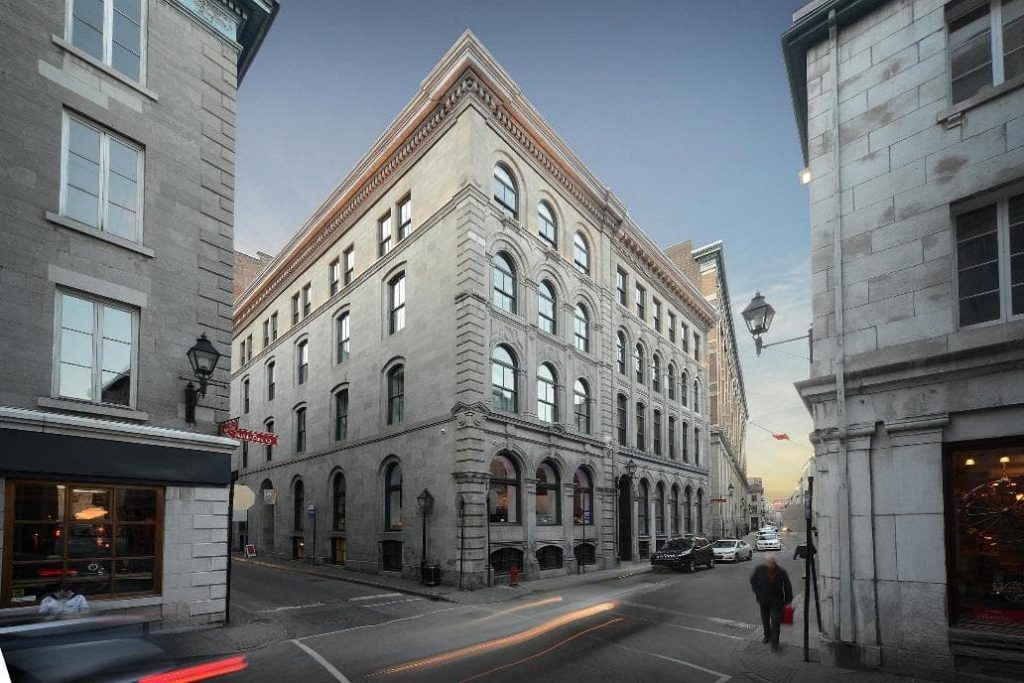Domtar Acoutical Laboratory was leased and operated by MJM Acoustical Consultants from 1992 until 2006, when the future of the facility became uncertain. In the summer of 2013, under a new owner, the building was demolished. Most of the research papers found on our website were conducted within this facility, with the characteristics and dimensions mentioned below.
The facility consisted of a control room and three reverberant rooms which were structurally decoupled from one another. Both the source room (90 m3) and the receiving room (255 m3) were equipped with rotating diffusers to maintain a proper reverberant field; all three rooms were also equipped with stationary diffusers. For airborne and impact measurements on floor/ceiling assemblies, the receiving room was located below the impact room (see figure 1 for more details). The dimensions, volume, construction, and weight of each room and the number of springs on which they rest (for the source and receiving room) appear in the paragraphs below, along with the dimensions of the test openings.
The measurements were controlled by a microcomputer interfaced with a Larson Davis 2800 or 2900 real time frequency analyser, to which were connected two Brüel & Kjær type 4155 condenser microphones mounted on two Larson Davis type 900 B preamplifiers; one microphone located in the source room and the other located in the receiving room. There were 10 microphone positions in each reverberant chamber; a stepping motor and a transverse chain carrier located along one diagonal of the room move the microphone from position to position. The microphones have been calibrated before and after each test with a Brüel & Kjær type 4230 piston phone calibrator. The sound pressure levels measured at each position are equivalent levels integrated over a period of more than 20 seconds.
You will find below the dimensions and characteristics of the reverberation chambers:






